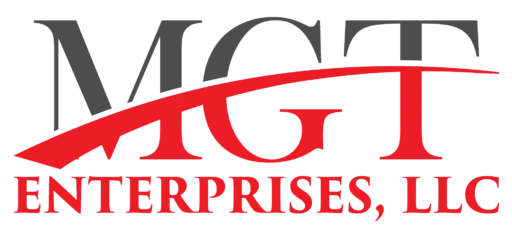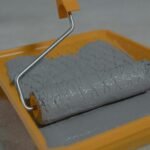Ever get the feeling the weather in the Midwest holds a grudge against your building? One moment it’s sunny skies, the next a full-fledged hailstorm with winds strong enough to roll over a billboard. Those quick-hit Midwest storms don’t just ruin your day; they can actually harm your commercial roofs and cost you time, money, and safety.
That’s where TPO roofing comes in. Built to endure the region’s most turbulent weather, this flexible and strong material is a favorite among commercial buildings, since it not only provides dependable protection but also reassurance when your investment is at stake in this volatile climate.
Understanding TPO Roofing
Thermoplastic Polyolefin or TPO is a single-ply membrane popularly used in commercial roofing systems. It’s made using a mixture of polypropylene and ethylene-propylene rubber, which allows it to have a flexible but durable structure. This combination allows this solution to perform extremely well in harsh weather, hence why they are seen as a reliable choice for storm damage repair.
One thing that differentiates TPO from other conventional roofing solutions is how it is installed. The seams are heat-welded and create a watertight bond that strengthens the overall membrane. Moreover, its bright white surface isn’t just for show — it is highly reflective and allows these solutions to greatly reduce heat absorption, resulting in better energy efficiency for commercial buildings during damp Midwest summers.
Thanks to its low-cost, energy-saving benefits and little maintenance needs, TPO roofing has gained quite a popularity across commercial projects. Plus, building owners relish its ability to provide value even while going against heavy winds, rain, and hail. All common culprits for storm damage in the Midwest.
Midwest Weather Challenges
If you’ve lived or worked in the Midwest, you understand that the weather doesn’t cooperate. Spring and summer introduce violent hailstorms that pound commercial roofing with golf-ball-sized hailstones, testing the roof’s resilience with each one. During winter, the Midwest is pounded with heavy snow and freeze-thaw conditions, expanding and contracting roof materials and stressing seams while degrading overall performance.
All year long, strong winds blow across the plains, and drastic temperature fluctuations from warm 70s to below freezing overnight cause roof coverings to contract and then rapidly expand. All this back and forth creates the ideal setting for membrane cracking and seam failure, as well as subsequent water leakage and storm damage repair.
TPO roofing is built to withstand those Midwest impacts. Its flexibility means it can adjust to the movement of the building, and its heat-welded seams resist uplift from strong winds. Commercial property owners looking out over the volatile Midwest can lessen the potential weather-related failure with the investment in TPO roofing.
TPO Roofing Performance in Extreme Conditions
UV Resistance
TPO roofing performs well in direct sunlight owing to its white finish with good reflectivity, eliminating much of the heating up. Not only does it protect the roof from UV wear and tear, but it also reduces the energy bill with cooler buildings. That is a welcome advantage in the Midwest, where summer sun can be unforgiving.
Impact Protection
In terms of puncture and impact resistance, TPO roofing performs better than numerous other forms of flat roof systems. Its strong membrane holds up against hailstorms and airborne debris, the likes of which are typical in harsh Midwestern storms. This resistance means fewer repairs and lower storm damage repair costs in the long run.
Cold Flexibility
Midwestern winter weather requires roofs able to endure punishment. TPO roofing still flexes when the temperature drops below zero, yet it will not split or crack from freeze-thaw cycles. This flexibility provides consistent defense all winter long without the other commercial roofing materials.
Wind Resistance
High-speed winds over open spaces are a dire threat to commercial roofs. TPO roofing is more resistant to uplift when installed properly than many other options are. They exceed standards more often than not and are a good choice for the Midwestern areas where storm potential is high and wind damage is a daily threat.
Chemical Shield
TPO roofing is also resistant to industrial pollutants, acid rain, and harsh chemicals commonly found in city or manufacturing environments. This resistance to chemicals extends the roof’s life and minimizes storm-damage repairs, which are more commonly needed in areas where exposure to the elements is a daily occurrence.
Storm Damage Repair and Maintenance
TPO roofs may experience seam separation, windblown and hail-induced punctures, and water collection subsequent to high-stress weather occurrences. Such are the typical Midwest storm damages requiring repairs when harsh weather conditions repeatedly pound the region and stress the roofs to their limits.
Repair Process
Efficient storm damage restoration begins with a post-storm assessment to determine the condition of the roof. Patching or heat welding is used to repair damaged areas to maintain the integrity of the membrane, and drainage systems are cleared or repaired to stop future ponding, keeping the TPO roof system water-tight and also sturdy.
Ongoing maintenance
Regular maintenance is key to TPO roof longevity. Periodic checks and immediate post-storm inspections detect minor flaws early before they turn into costly repairs. Such proactive maintenance extends not just the longevity of the roof but also keeps the warranty intact, which is vital to the concerns of the owners of commercial buildings exposed to the Midwest elements.
Comparative Breakdown — TPO versus Other Roofing Materials
TPO Versus EPDM
When it comes to comparing TRO roofing and EPDM, the difference actually matters, particularly in storm-prone areas.. While EDPM is also a rubber-based material known for its flexibility, it lacks heat absorption and is prone to punctures. TPO, on the other hand, has a reflective surface that allows it to reflect the sunlight while also offering superior storm damage repair potential and overall durability.
TPO Versus Modified Bitumen
TPO roofing is superior to Modified Bitumen in many business projects. Modified Bitumen is more resistant to punctures but is also heavier, more difficult to install, and doesn’t reflect UV. TPO roofing is more energy-efficient and lightweight and is better suited to large commercial buildings requiring efficient storm damage restoration and new performance standards.
Final Thoughts
From pounding hail to freezing snow and blaring sun, TPO roofing demonstrates its durability in the volatile Midwest. Its energy efficiency, storm damage resistance when repaired, and flexibility make it the premier choice for commercial roofs.






